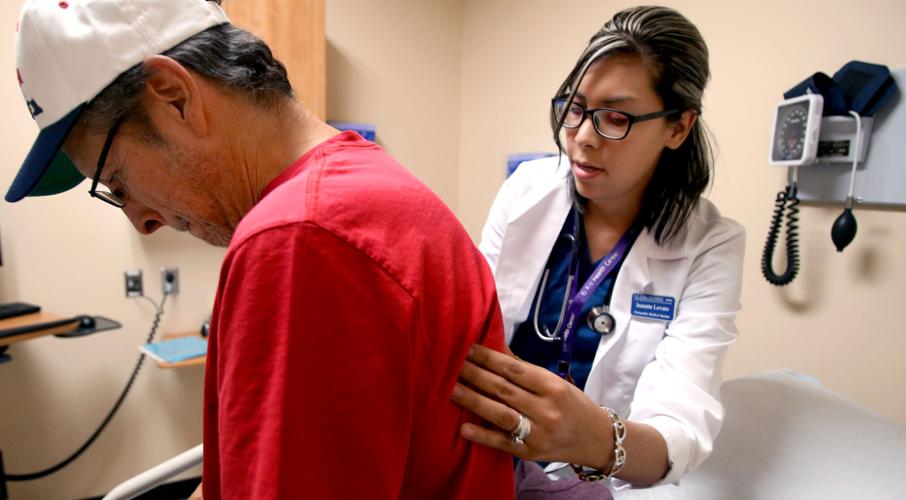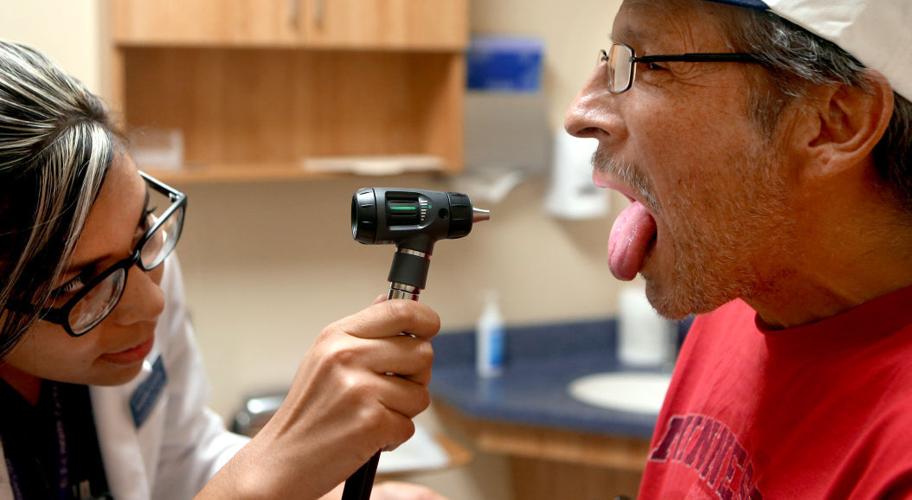Pima County’s poverty and lack of access to health providers is having a serious effect on the community’s well-being, a new report says.
The Community Health Needs Assessment, completed every three years, identified four key areas of priority for the health community:
- addressing anxiety and depression spectrum disorders
- substance abuse and dependency
- injuries and accidents
- diabetes.
Two consistent factors are affecting those four areas — poverty and access to health care — says the report, which was released Wednesday by the local health community at the Pima County Health Department. Inadequate access to primary care, mental health and dental providers has “overarching implications” on personal health, the report says.
Setting goals and identifying ways to help local residents is the next challenge.
“Doing an assessment is a lot easier than fixing the problems,” said Judy Rich, chief executive officer of Tucson Medical Center, which is Tucson’s largest hospital.
One area of focus already is addressing the large number of people locally who are abusing opioid drugs, she said — an issue that was also raised by President Obama in Tuesday’s State of the Union. But local health officials say Pima County’s substance abuse problems, particularly with opioids, is especially serious.
Aggravating local substance abuse issues are easy access, poverty, lack of employment opportunities, adverse childhood experiences and a level of acceptability of substance abuse, the report says.
Hospital officials say they are already working to reduce local injuries and accidents, including falls among the elderly, through community building with social opportunities for seniors, environment enhancement and research and policy development.
The best things that the community can do to improve local health are to lift children out of poverty and push them through the education pipeline, Pima County Health Department Director Dr. Francisco Garcia said.
Garcia said the partners who participated in the health needs assessment are, “trying to be open to what our community is telling us.” The Affordable Care Act requires nonprofit hospitals to complete the report every three years, but in Pima County all hospitals and other local health entities decided to participate, too.
Estimates on poverty levels in Pima County vary, but the report released Wednesday says nearly 19 percent of the county’s residents are living below the federal poverty level, which is $24,250 for a family of four and $11,770 for an individual.
The Pima County level is higher than the 2014 U.S. poverty rate of 14.8 percent and slightly higher than what the report lists as the state average of 17.15 percent.
Most measures of poverty locally show that area children are particularly affected and have a higher rate of poverty than other age groups. One indicator of poverty is the percentage of students receiving free and reduced lunch. To qualify, students must be from a family that earns 185 percent of the federal poverty level or less — that works out to $44,123 for a family of four.
In the 2014-15 school year, 58 percent of Arizona students were receiving free and reduced lunch compared with 84 percent in Sunnyside Unified School District, which is on Tucson’s south side. In the Tucson Unified School District it was 73.54 percent.
The Community Health Needs Assessment notes that the percentage of Pima County residents without a high school diploma is lagging behind other areas of the state. Those with less than a high school diploma in 2012 ranged from 15 percent in central Tucson to 39 percent in the San Xavier district of the Tohono O’odham reservation.
Some of the areas where Pima County had positive results were in its high rates of school children who are vaccinated against vaccine-preventable diseases. Also, residents here are on average more active and less likely to be obese or overweight than people in other parts of the state, the report says.
And the percentage of people locally without health insurance has dropped to between 10 and 12 percent from a rate of 20 percent prior to the Affordable Care Act taking effect.
Getting people enrolled in health insurance was a top priority of local health providers after the last Community Health Needs Assessment.
El Rio Community Health Center, which sees more than 85,000 individual (unduplicated) patients per year, has seen its level of uninsured patients drop from nearly 30 percent prior to the Affordable Care Act to 17 percent in 2014, said El Rio’s chief executive officer, Nancy Johnson. Officials expect data from 2015 in 30 days.
“We see many of our uninsured that purchased insurance through the ACA and others that became eligible for Medicaid with Arizona’s Medicaid expansion,” Johnson said, adding that El Rio now employs more than 30 certified insurance counselors to assist people with filling out health insurance applications.
El Rio continues to grow each year with health center locations across Tucson, Johnson said. When it was founded 50 years ago, El Rio was considered the, “care of last resort” for those who could not afford care or insurance and received funding via President Lyndon B. Johnson’s War on Poverty.
But El Rio’s role in the community has since changed. While it still plays a major role in seeing all patients, regardless of their ability to pay, it is increasingly seeing people with Medicare and all types of commercial insurance, Nancy Johnson said.
Part of that could be due to the access problems outlined in the health needs assessment report, which notes that Pima County is federally designated as a “health professional shortage area.”
There’s still more progress to be made in reducing the number of people locally who do not have insurance, Garcia noted.
The report says Hispanic adults who are between 18 to 34 years old and people living in low income households are most likely to be uninsured. And people without health insurance are significantly less likely to see a doctor when they are sick or for routine visits; take prescribed medication due to cost; and receive dental care.
Other areas where improvement could be made is in making healthier food choices available to all residents, regardless of income, officials said.
The report says the prevalence of diabetes statewide has more than doubled since 2003 and Type 2 diabetes is a “major threat” to community and public health in Pima County.





